Don M. Winn's Blog, page 5
September 29, 2021
Early Detection of Dyslexia: Genetics of Dyslexia Part 2
Early Detection of Dyslexia: Genetics of Dyslexia Part 2
You can listen to this blog.Frequently, children are suspected to be dyslexic learners after they are already enrolled in school and have been consistently demonstrating difficulties with reading and spelling. Once a parent or educator recognizes those difficulties, the children can be tested and receive educational accommodation.
But what if dyslexia could be discovered before children start school and well before they begin to fall behind? How early do the processing issues of dyslexia present themselves in a child’s life, and do those children with a family history of dyslexia merit special attention? Is it possible to make early detection of dyslexia happen even earlier?
In 2020, three scientists set out to answer these questions. The Australian Research Council awarded a grant to Marina Kalashnikova, Usha Goswami, and Denis Burnam of the MARCS Institute for Brain, Behaviour and Development, Western Sydney University, Sydney, New South Wales, Australia.
Their premise was this: early markers of later dyslexia will be present in infancy, especially in infants with a family history of dyslexia. The researchers assembled a group of nineteen-month-old infants, half of whom were genetically at risk for dyslexia by virtue of having one dyslexic parent, the other half of whom were not at risk.
The test involved learning new words by connecting them to their referent. An example of a word and its referent is the word dog, and a picture of a dog. Both indicate the same information, one in written form and the other in pictorial form.
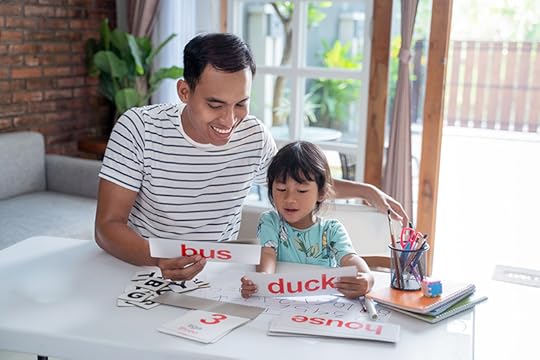
The researchers were looking for connections between how each group processed sound (auditory development) and phonological awareness, or the ability to organize the sounds of their language. These two aspects, the researchers felt, would impact a child’s lexical development.
According to the Encyclopedia of Lexical Development, “Lexical development is the study of changes that occur in vocabulary knowledge over childhood. It concerns children’s first steps in building a vocabulary, how children of different ages assign meanings to words, and how these meanings change in response to various experiences.”
How did each group of nineteen-month-olds perform? The researchers concluded that those with a family history of dyslexia had greater difficulty performing the new word-based tasks compared to those with no family history of dyslexia.
As this blog and the previous (Genetics of Dyslexia: Part 1) illustrate, whether we are peering into the brain via high-tech imaging or asking infants to learn new words using auditory and visual processing, the inherited nature of dyslexia is undeniable. This makes paying special attention to infants of families with known dyslexia a priority for the earliest possible diagnosis. Early detection of dyslexia can help dyslexic learners receive needed help before they fall too far behind.
The study this blog is based upon: https://onlinelibrary.wiley.com/doi/10.1002/dys.1649
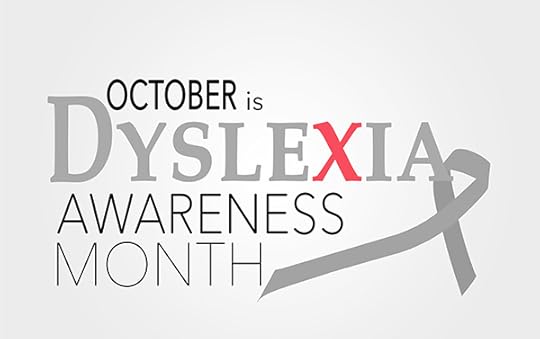
October is Dyslexia Awareness Month! For a thorough discussion of dyslexia, you may enjoy the second edition of my award-winning book Raising a Child with Dyslexia: What Every Parent Needs to Know, available in softcover, hardcover, eBook, and audio. In addition to facts on testing and accommodation, my book gives you the tools to provide the social and emotional support children with dyslexia require. The second edition has the same great content as the first edition but now contains a very helpful bibliography and index and an exciting new cover.
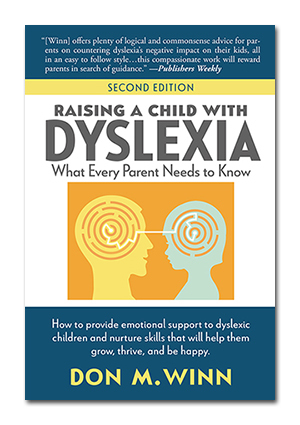
You may also enjoy Failing Students or Failing Schools? A Parent’s Guide to Reading Instruction and Intervention, by reading specialist and shortlisted World Literacy Award nominee Faith Borkowsky.
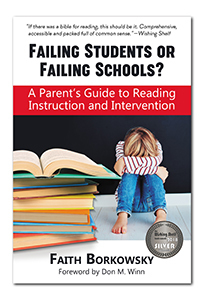
Cardboard Box Adventures picture books are great for shared reading and can help parents establish a strong preliteracy foundation for their children. Check out the CBA Catalog for a full list of award-winning picture books, chapter books, and resources for parents and educators. Visit my Amazon author page for more information.
The post Early Detection of Dyslexia: Genetics of Dyslexia Part 2 appeared first on Author Don Winn's Blog.
September 14, 2021
Genetics of Dyslexia: Part 1
Genetics of Dyslexia: Part 1
You can listen to this blog.While there is no one “dyslexia gene,” genetics do play a role when a child develops dyslexia. It’s important to note that genetics is just one part of dyslexia; a number of other factors also underlie the propensity towards dyslexia. For today’s purposes, however, we will consider some recent discoveries pointing to the heritability of dyslexia.
In a collaboration between Children’s Hospital Boston Department of Cognitive Neuroscience and Developmental Medicine and Harvard Medical School, researchers explored the heritability of dyslexia by looking for changes in white matter in the brains of infants. While previous studies point to measurable white matter differences in the left side of the brain in dyslexic kindergarten students, these scientists wanted to determine if these changes could be seen in much younger children. Specifically, they were looking for changes to the part of the brain known as the arcuate fasciculus.
What exactly is the arcuate fasciculus? It’s a substantial bundle of axons (nerve cells) that connects three areas of the brain: the temporal cortex, the inferior parietal cortex, and certain locations in the frontal lobe. One of the key roles of the arcuate fasciculus is connecting Broca’s and Wernicke’s areas, which are involved in producing and understanding language.
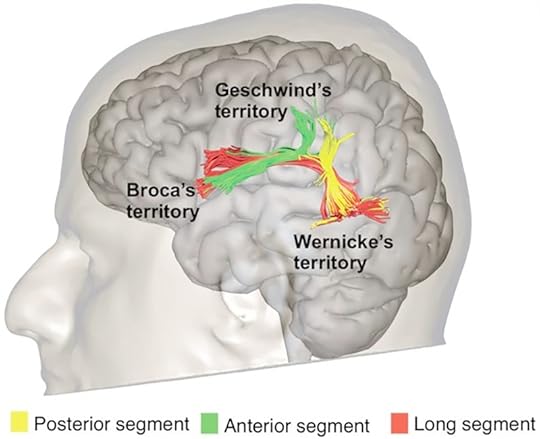 Image courtesy of Marco Catani et al. ‘Frontal networks in adults with autism spectrum disorder’ Brain Feb 2016, 139 (2) 616-630; DOI: 10.1093/brain/awv351
Image courtesy of Marco Catani et al. ‘Frontal networks in adults with autism spectrum disorder’ Brain Feb 2016, 139 (2) 616-630; DOI: 10.1093/brain/awv351To that end, they assembled fourteen infants with a family history of dyslexia, aged six to eighteen months, and eighteen infants with no family history of dyslexia, between the ages of five and seventeen months. Then the researchers used diffusion MRI to measure the ability of the arcuate fasciculus to transmit information in each infant’s brain. What did the scientists discover?
Fully 50 percent of the infants with a sibling or parent with dyslexia showed measurable diminishment in their left arcuate fasciculus. Additionally, the central portions of the arcuate fasciculus showed significantly lower levels of ability to transmit information when compared to infants with no family history of dyslexia.
Interestingly, the infants with the most robust arcuate fasciculus—namely, those with no family history of dyslexia—demonstrated the most expressive language skills. The conclusion of the study states, “Our results demonstrate that atypical brain development associated with Developmental Dyslexia is already present within the first 18 months of life, suggesting that the deficits associated with Developmental Dyslexia may result from altered structural connectivity in left-hemispheric regions.”
My hope is that one day soon, all infants can benefit from early screening to diagnose dyslexia well before the child enters school. This data will offer parents the opportunity to better prepare their children for success by building a solid preliteracy foundation.
The study this blog is based upon: https://pubmed.ncbi.nlm.nih.gov/26643353/

For a thorough discussion of dyslexia, you may enjoy my award-winning book Raising a Child with Dyslexia: What Every Parent Needs to Know, available in softcover, hardcover, eBook, and audio. In addition to facts on testing and accommodation, my book gives you the tools to provide the social and emotional support children with dyslexia require. This is a sneak preview of the new cover (soon to be available!) with the same great content.
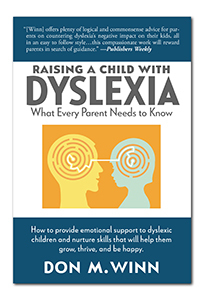
You may also enjoy Failing Students or Failing Schools? A Parent’s Guide to Reading Instruction and Intervention, by reading specialist and shortlisted World Literacy Award nominee Faith Borkowsky.

Cardboard Box Adventures picture books are great for shared reading and can help parents establish a strong preliteracy foundation for their children. Check out the CBA Catalog for a full list of award-winning picture books, chapter books, and resources for parents and educators. Visit my Amazon author page for more information.
The post Genetics of Dyslexia: Part 1 appeared first on Author Don Winn's Blog.
August 24, 2021
The Land Knows You Even When You Are Lost
I read a line from a book recently that really captured my imagination. The line was “the land knows you, even when you are lost.” Here’s why it caught my attention.
The French term en plein air describes the act of painting a landscape scene outdoors. Many Impressionist painters found their greatest inspiration outside, surrounded by nature. And while few of us paint like Renoir or Monet, there is something so restorative, so grounding, so resetting to the soul about moving an indoor activity outdoors.
Even something as simple as a picnic with family or a friend can completely change one’s point of view. This truth is captured so eloquently in a quote from botanist and member of the Citizen Potawatomi Nation, Robin Wall Kimmerer. In her book, Braiding Sweetgrass: Indigenous Wisdom, Scientific Knowledge, and the Teaching of Plants she writes, “the land knows you, even when you are lost.”
When was the last time you stopped to look at the beauty of a flower, to smell its fragrance, to notice the butterflies and the bees buzzing around it? Or to lean up against a big tree and allow yourself to gently sway to its rhythm as it interacted with the wind? Or to get close to the ground to examine the cushiony emerald wonder of a patch of moss?
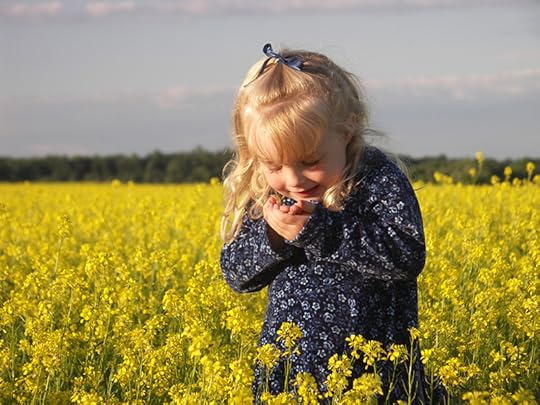
Reconnecting with our planet touches us in a way little else can. Kimmerer writes, “in some Native languages, the term for plants translates to ‘those who take care of us.’” She continues, “paying attention is a form of reciprocity with the living world, receiving the gifts with open eyes and open heart.” Who of us doesn’t need more of this type of gift right about now?
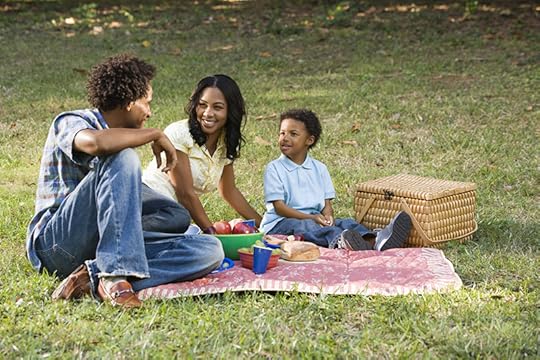
As we near the end of summer, I invite you to throw some sandwiches and a thermos of tea in a bag and enjoy the quiet ministrations of our beautiful earth. Explore together and discuss what you find. Enjoy it with the people you care about.
Cardboard Box Adventures picture books are great for shared reading and can help parents establish a strong preliteracy foundation for their children. Check out the CBA Catalog for a full list of award-winning picture books, chapter books, and resources for parents and educators. Visit my Amazon author page for more information.
Link to the book:
The post The Land Knows You Even When You Are Lost appeared first on Author Don Winn's Blog.
August 10, 2021
Back to School Quotes
Here’s a little vintage wisdom that may help you have a positive start to the new school year during these challenging times. Please enjoy two unusual back to school quotes from an unlikely source.
As parents and teachers and students contemplate the beginning of another school year under the shadow of Covid, folks are literally taking things a minute at a time. The situation is once again rife with unknowns and anxiety-inducing choices. These are circumstances we never would have envisioned or chosen.
But others have faced difficult times in the past and made it through, even when their choices were limited by their circumstances. And often their words can be strangely comforting and visionary.
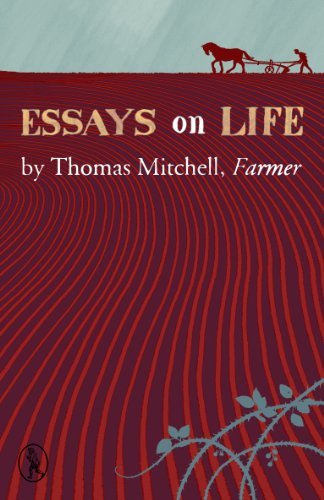
One such person was a Scottish tenant farmer named Thomas Mitchell. Born in 1870, he farmed the same plot of land that his ancestors had cultivated for nearly 100 years. Farming is a hard life under the best of circumstances, but a tenant farmer didn’t even have the security of owning the land he worked on every day. Instead, he paid rent once a year to the landowner, who profited from the tenant’s hard work.
Although of modest, humble circumstances financially, Thomas Mitchell was an avid reader and student of life. His book, Essays on Life, by Thomas Mitchell, Farmer speaks of a man who was at peace with his circumstances, who knew exactly what he could and could not control, and who sought to be the best version of a human being he could be.
After reading the book, I found myself thinking about the wisdom therein and how well it suits our present challenges. And although these back to school quotes are not specifically about school, you might be surprised to see how they apply to life in our day and the start of a new school year.
For example, Mitchell knew how powerful an effect our words can have on the well-being of those around us. This is a topic I’ve written about before (Does Word Choice Matter, Helping Children With Learning Differences), but his words really struck home when I read them.
Mitchell observes, “A kind word in season may be spoken. A word of praise, where praise is deserved. We are all very sparing of praise, but there is more danger of hurting another by withholding it, than of injuring him by bestowing it. A word of encouragement in times of failure and disappointment; a word of hope to one who is in the depths of darkness or despair; a merry smile, a jocular remark, even a clasp of the hand, go a long way in cheering the heart or lightening the burden of others when they are in need of sympathy and cheer. They are helped and strengthened much in this way.”

Whether our children are struggling readers, are behind in their schoolwork for other reasons, or are simply feeling overwhelmed, they will benefit from our words praising their efforts and our patient inquiry about what they are feeling and experiencing. A child most needs to feel seen, heard, and understood when they are overwhelmed, and a loving parent, grandparent, or caregiver can make themselves available to partner with a child during their struggles and to help them find their way.
I found a second piece of wisdom which can also be a source for timely back to school quotes. Mitchell writes, “One of the best secrets of a happy life is the art of extracting comfort and sweetness from every circumstance. . .People are always looking for happiness at some future time and in some new thing, or some new set of circumstances, in possession of which they someday expect to find themselves. But the fact is, if happiness is not found now, where we are, and as we are, there is little chance of it ever being found. There is a great deal more happiness around us day by day than we have the sense or power to seek and find. If we are to cultivate the art of living, we should cultivate the art of extracting sweetness and comfort out of everything, as the bee goes from flower to flower in search of honey.”
Following this advice, what sweetness and comfort can we extract from our current circumstances? We might feel we have to look hard to find any positive aspects, but they are there. Have we grown as people during these last seventeen months? Have we had more time to spend together as a family? Have we gone outside our comfort zone to accomplish some type of home or virtual schooling, remote job assignments, or other things required by our circumstances? Have we rediscovered simpler pleasures like working puzzles, playing board games, or playing instruments with family and friends? Have we read great books together as a family or as individuals? Have we parents been able to observe aspects of our child’s learning style or learning challenge that we would have never seen without such close involvement? All these things and more can offer meaning to the pandemic experiences we’ve had, but only if we take the time to notice them.
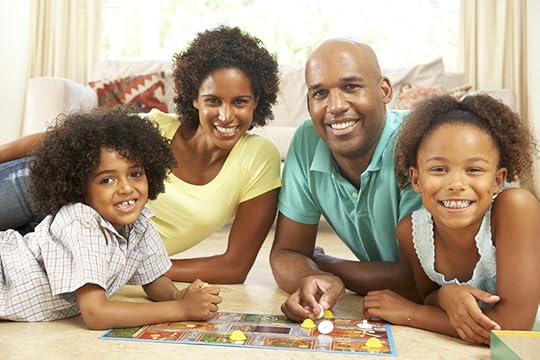
Whatever your choices for your child this school year, I hope that you make moments of kindness, love, encouragement, and fun together. I hope you enjoyed these two back to school quotes from Thomas Mitchell.
A Great Kid’s Chapter Book Series to Start the New School Year
If you’re looking for a series of exciting adventure books that appeal to reluctant readers, check out the award-winning Sir Kaye the Boy Knight chapter book series. The Sir Kaye series for kids by Don M. Winn has everything—action, medieval adventure, excitement, mystery, knights, friendship, chivalry, kid heroes, and plenty of humor and fun. Written for independent readers, but also ideal for shared reading, this compelling series is sure to attract even the most reluctant young reader. Also available as audiobooks.
Cardboard Box Adventures picture books are great for shared reading and can help parents establish a strong preliteracy foundation for their children. Check out the CBA Catalog for a full list of award-winning picture books, chapter books, and resources for parents and educators. Visit my Amazon author page for more information.
The post Back to School Quotes appeared first on Author Don Winn's Blog.
July 13, 2021
Effective Reading Instruction Experiences
We hear so much about the importance of proper reading instruction—not just for children with dyslexia, but for all children. So I wanted to share this great interview that relates the benefits of effective reading instruction experiences.
Why?
Well, one of my favorite educational experts and authors, Faith Borkowsky, recently said, “We have to begin to showcase the damage inflicted on so many kids by the existing philosophy [of reading instruction] and how their lives have been changed by reading intervention that is explicit, systematic, cumulative, and structured.”
We need to hear more stories of the wonderful results struggling readers have obtained when they receive structured, explicit reading intervention. We need to know how their lives are suddenly filled with confidence and hope once they begin to understand the mechanics of reading after having been properly instructed.
In her blog “Facts Tell, Stories Sell: Teach My Kid to Read,” Faith shares her interview with a husband and wife—both of whom are educators—whose son was struggling despite school accommodations. See how effective reading instruction experiences changed all their lives. The first link below will take you to Faith’s blog, with written highlights of the experience. The second link is a recording of the Facebook Live interview.
Facts Tell, Stories Sell: Teach My Kid to Read
Faith Borkowsky is a Reading and Learning Specialist, Regional Literacy Coach, and a Certified Wilson and IDA Dyslexia Practitioner. She is also the founder of High Five Literacy and Academic Coaching.
Wherever you and your family are in your dyslexia experience, don’t miss the award-winning books Raising a Child With Dyslexia: What Every Parent Needs to Know, by Don M. Winn, and Failing Students or Failing Schools? A Parent’s Guide to Reading Instruction and Intervention, by reading specialist Faith Borkowsky.
Cardboard Box Adventures picture books are great for shared reading and can help parents establish a strong preliteracy foundation for their children. Check out the CBA Catalog for a full list of award-winning picture books, chapter books, and resources for parents and educators. Visit my Amazon author page for more information.
The post Effective Reading Instruction Experiences appeared first on Author Don Winn's Blog.
June 22, 2021
Teach Kids Positive Body Image
I recently met a family whose young child had survived a car accident. I saw marks of her survival, including several evident scars. The parents told me that they plan for her to eventually have plastic surgery. In the meantime, they were looking for ways to help their daughter cope with her changed appearance right now. Although this instance is unique because of the car accident, these parents aren’t alone in their quest. Almost every parent will find that at some time or another, their child will have negative feelings about their appearance. What can parents do to teach kids how to have a positive body image?
Our twenty-first century is a time when magnificent and exciting developments in science and technology take place daily. However, culturally and sociologically, not everything is changing at such a rapid pace. Our planet is still marred by the judgment, bullying, or ostracism of people who look even mildly different from modern standards of attractiveness. Social media—the technological platform for advertising, social interaction, and entertainment—perpetuates beliefs about appearance and its link to happiness. And these beliefs influence and shape even the youngest observers.
Dangers of a Poor Body ImageBody image and self-image begin to form at a very young age. Toddlers in general may not notice or be deterred by physical or social differences in their peers. But by late preschool age, the story begins to change. And by the time a child enters elementary school, bullying may take place in earnest. A child may be judged and targeted for even the most subtle or inconsequential difference in appearance. It may be the size of the child’s ears or the position of their teeth. Perhaps others draw unkind attention to a child’s hairstyle or lack of coordination, or their height, weight, or race.
Without help, a child can be decimated by these rejections. They may begin to feel ashamed of their appearance and hate themselves. And the isolation caused by shame breeds terrible, lifelong consequences.
In 2016, the University of North Carolina at Chapel Hill conducted a study about the link between social relationships and health. Researchers measured three types of social relationships: social support, social integration, and social strain. Then they studied their relationship to common risk factors for mortality such as blood pressure, waist circumference, body mass index, and systemic inflammation as measured by levels of C-reactive protein. Their findings are fascinating. The more social ties the test subjects had at an early age, the better their health throughout their lifespan.
What does this mean for parents? That the best opportunity to prepare their kids for body image issues is before they start school. How can parents teach kids positive body image?
Conversation is KeyMost parents know that an easy, natural way to start a conversation with kids is to read a story together. When the story discusses an important topic, parents can learn through discussion how their kids feel about that topic. I wrote The Tortoise and the Hairpiece to address topics about body image and insecurity. The story is about a little turtle who wants to look like everyone else. He is afraid no one will like him because he looks different (no hair). He eventually learns that who you are on the inside is more important than how you look, and that true friends know that. The story includes questions at the end to help start conversations about self-image. This story can be helpful for children of any gender.
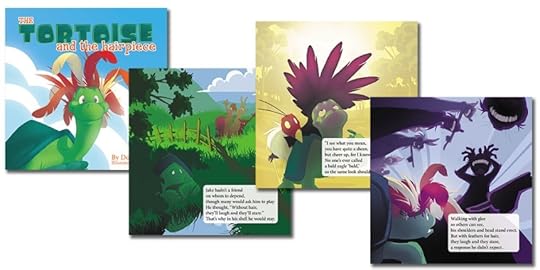
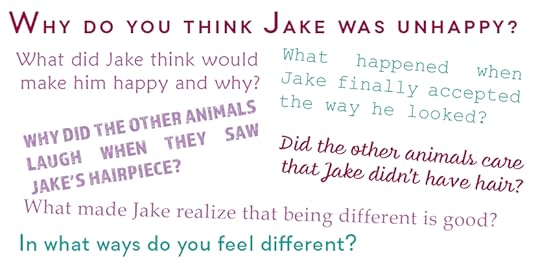
Parents can use the story to help children to cultivate a positive attitude about how they look. Kids can learn to appreciate their own unique qualities. Maybe they can even learn that they don’t have to look a certain way in order to be considered attractive.
Teach Kids Positive Body Image Through ExampleAdmittedly, it is incredibly hard for even adults to handle the pressure from the media to look a certain way. But as parents, we’d like to do our best to help our kids deal with that influence in a healthy, positive, happy way.
I’ve compiled a few ideas you could try using to help your kids develop a positive perspective about their appearance. These ideas may also help kids form a positive attitude about the way other people look.
After meeting a new person, once you are alone with your child, point out positive, appropriate things you noticed about that person’s appearance. Mention the color of their eyes or their nice smile or anything else you appreciated. This will help children learn to look for the good aspects of other people’s appearances and not just to focus on the unexpected. Training them to be able to see others this way will help them learn to see themselves in the same way—appreciating the good things about their appearance.Refrain from making negative comments about other people’s looks in your children’s hearing.When you see someone who looks happy and content, even a stranger in a crowd, if it is possible to do so in a discreet way, point that person out to your child. Draw their attention to the idea that a person looks attractive because they look happy. This could help children realize that attractiveness is not necessarily dependent on physical features.Set a good example. Don’t let your children see you hating things about your own appearance. Show them through your words and actions and the comments you make about yourself that you are comfortable with who you are. Even if there are things about your appearance that you would like to change, let them see that these are not the most important things on your mind.The Tortoise and the Hairpiece and its helpful questions are only a jumping-off point. Each child is different and might have different concerns. So use the questions to help your children explore their thoughts and feelings on the subject of self-image. You may learn something new about them, and it will bring you closer together!
Cardboard Box Adventures picture books are great for shared reading and can help parents establish a strong preliteracy foundation for their children. Check out the CBA Catalog for a full list of award-winning picture books, chapter books, and resources for parents and educators. Visit my Amazon author page for more information.
The post Teach Kids Positive Body Image appeared first on Author Don Winn's Blog.
June 8, 2021
The Value of Family History
I’ve been thinking about family and extended family a lot lately. My family is facing an imminent loss, which makes me think about my father, who passed away many years ago. Along those lines, I decided to write a little bit about the value of family history.
Living HistorySometimes it seems like family members know very little about each other. Life gets busy and there are always so many other things to do. And when we see people regularly, we feel like we “know” them. But when a family member passes away, we might realize that we didn’t know them as well as we thought. Sadly, the opportunity to know them better is gone.
I have frequently heard people wish that they could turn back time and ask their deceased relative some crucial question. Perhaps they need a childhood memory clarified. Maybe they wish to know the explanation of a curious photograph. They might need to know if someone else in the extended family had a particular medical condition. Or maybe they’ve chanced upon some old correspondence that reveals more about their relative than they ever imagined. Or maybe they have come to recognize the value of family history to a greater degree now that it’s out of reach.
Unless we ask, we will know very little about the hopes, dreams, struggles, disappointments, and histories of our families. To miss out on the wisdom gained from those experiences is to miss out on the richest aspect of a relationship: knowing someone deeply.
Learning from My Dad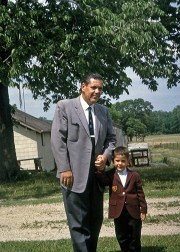
In my own family, I treasure the memories I have of spending time with my dad. He’s been gone now for over 38 years. How I loved our conversations and projects together!
Even when I was as young as 3 or 4 years of age, he always let me tag along with him. We went to the lumberyard when he needed supplies for a home project. He let me help when he worked in the yard or garden—although I always slowed down his work.
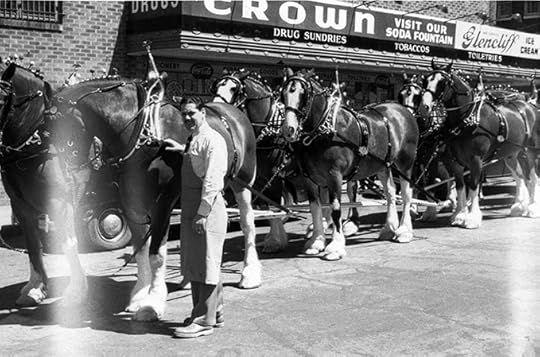
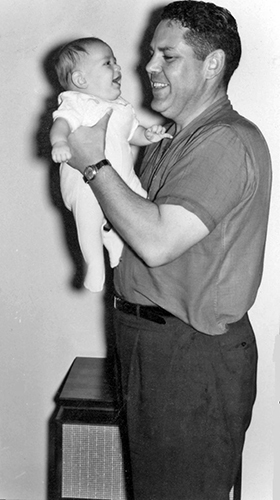
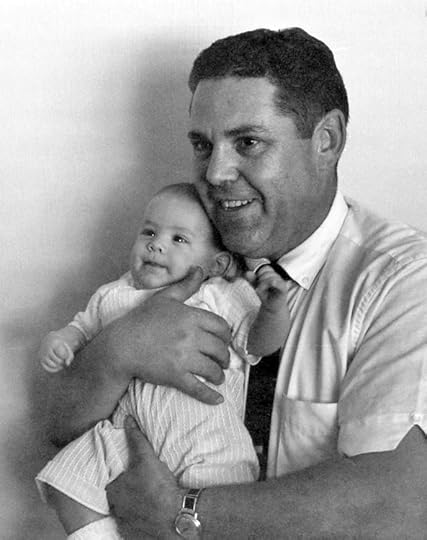
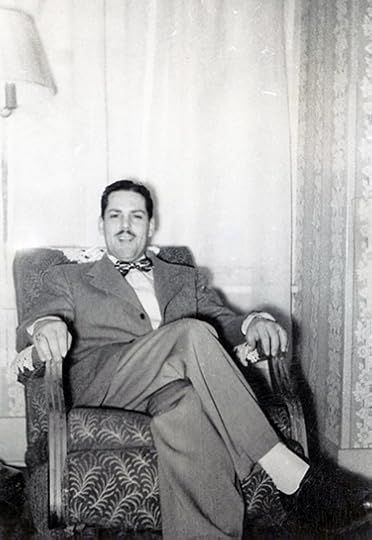
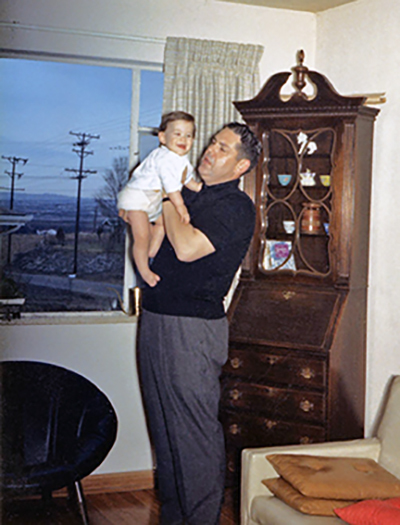
I would frequently go with him on sales calls for his job. At home, while my dad worked diligently to support us, I sat on the floor under his desk, doing my own “paperwork” with junk mail.
 My dad’s makeshift office and sales supplies where I would be underfoot with my pretend desk and valuable junk mail. I especially liked the junk mail with stickers—like from a record company.
My dad’s makeshift office and sales supplies where I would be underfoot with my pretend desk and valuable junk mail. I especially liked the junk mail with stickers—like from a record company.But I also have regrets. My dad died when I was only twenty-one, so I never got to know him as an adult. I never knew about the man he had been when he wasn’t being my dad.
The Value of ConversationOn my wife’s side of the family, she has had daily conversations with her aging mother for years. But it’s only been within the last three years that her mom has really opened up to her. She began sharing aspects of her childhood and young adulthood that literally no one else alive knew about her.
We’re talking big life events here. For example, she was raised by her grandmother until she was eight years old. But she never knew that her grandmother was not her mother until her grandmother died. Then she discovered that her real mother was a woman who had visited her a few times. This woman was someone she thought of as “the pretty lady who always smelled nice.” My wife also learned that her mother had been engaged to be married before she married my wife’s father.
Shared experience brings families together. They can be shared either by experiencing them as a group or through the telling of stories. Family history, if you will.
Sometimes this process of coming to value family history presents difficulties. The 2003 movie Big Fish portrays a man’s relationship with his adult son. The son desperately wants to know his father. But the father, Ed, is known for telling truly outrageous tall tales. This makes his son Will afraid he will never be able to know who his father really is. After one particularly frustrating encounter, the script reads as follows:
“Ed Bloom-Senior: What do you want? Who do you want me to be?
Will Bloom: Just yourself. Good, bad, everything. Just show me who you are for once.”
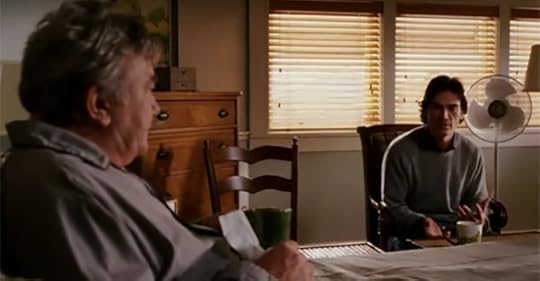 Scene from Big FishLearning to Confront Our Discomforts
Scene from Big FishLearning to Confront Our DiscomfortsWhether the people in your life under or overshare, creating meaningful connections with our loved ones requires work. First, we need to have the desire to get to know them. Then we need to be willing to spend plenty of time in patient conversation. Doing so provides a wonderful kind of inheritance—the solidity and stability of knowing the people who came before you. Knowing and appreciating your heritage can be an anchor in the rough seas of an unstable world. It reminds us that the family who came before us dealt with and survived hard things and that we can too.
Shawn Coyle, author of The Story Grid, says, “A well-told story is a gift to the reader/listener/viewer because it teaches them how to confront their own discomforts.” Mr. Coyle is writing about the art of crafting books people will want to read. But the same principle applies to the stories we share with one another as families. Learning to confront our own discomforts is a process best aided by seeing (or hearing stories of) our loved ones coping with the same.
History Class and Personal HistoriesMany kids don’t particularly enjoy history class. After all, what could possibly be interesting about a bunch of dead people, right? How could reading about monarchs and political coups possibly interest a child?
But history is so much more than learning about which political faction overthrew another. According to the philosophy of the French Annales school, history must include insight into the daily lives of people from all backgrounds to be truly and personally meaningful to the masses. This alone might make the value of family history more important to the parents of school age children.
Helping a child understand their own family’s personal history can often give them a very different perspective on history class.
Other Lessons Learned from Family HistoriesThrough family stories and histories, children learn that the adults in their life aren’t just there to take care of them. They are fully-fledged people who have interests, feelings, dreams, and struggles they have overcome. How many remarkable accomplishments of our ancestors have already been lost due to inattention? It is our job and our privilege as parents and grandparents to keep these stories alive for future generations. So give the gift of as much family history and stories as you can to your children while you can.
“A man tells his stories so many times that he becomes the stories. They live on after him, and in that way he becomes immortal.” Big Fish, 2003.
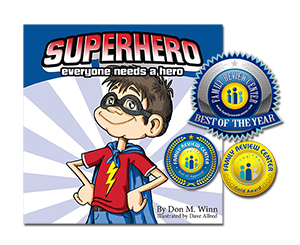
I started writing this article as a tribute to dad. My dad always made me feel safe and loved. So I wrote my picture book Superhero for him. As a kid, I dreamed of being a hero—even a superhero—like I saw on TV and in movies. But my dad taught me that being a hero means showing up for the people you love. Being present, being available, and being willing to listen and offer comfort. Every time I had a bad dream or was in over my head, I could call on my dad. He was always there for me.
Cardboard Box Adventures picture books are great for shared reading and can help parents establish a strong preliteracy foundation for their children. Check out the CBA Catalog for a full list of award-winning picture books, chapter books, and resources for parents and educators. Visit my Amazon author page for more information.
The post The Value of Family History appeared first on Author Don Winn's Blog.
May 27, 2021
A Book for Kids Who Hate Reading
As a dyslexic, reading was (and still is) a challenge for me. It takes a lot of extra time and effort, so I am always on the lookout for books and resources to motivate struggling readers. So if you’re also on the lookout for a book for kids who hate reading, look no further.
I recently found a book that I know I would have loved as a kid. The book is called I Hate Reading. It’s a lengthy, chapter-book sized story written specifically for kids who hate reading. It’s smart and funny and your kids will love it—whether they hate reading or not.
I was so intrigued by the book that I interviewed the author, Beth Bacon. In this interview, we talk about two of her books: I Hate Reading and The Book No One Wants to Read. Beth’s entertaining books are for 6–9 year old intermediate reluctant readers. She was inspired to write the first book in her Reluctant Reader Series by her two sons, Arthur and Henry, who did not like to read.
We talk about Beth’s motivation and process for writing her books as well as how to overcome a child’s reluctance to do something they are not good at (like reading) by turning it into a game.
A great reminder I took away from our conversation is that appearances matter to a child. It is important to provide larger format books at a child’s reading level. This helps prevent slower readers from feeling embarrassed in front of their peers by carrying around beginning reading material when everyone else has moved on to chapter books.
And of course we talk about how modeling reading as a parent is an important part of motivating your reluctant reader. Beth recommends a clever takeaway tip as well—if kids are going to be watching tv anyway (and they are), turn on the closed captioning so they can read the words as well as hear them. Learn all about Beth’s books and some more helpful tips in this interview: Making It Easy to Turn the Page.
About Beth Bacon:
Beth Bacon earned an MFA in writing for Children and Young Adults from Vermont College of Fine Arts. She also has a degree in Communication Theory from NYU and a degree in Literature from Harvard University. Beth grew up in Boston, Massachusetts and now lives in the Pacific Northwest.
Beth Bacon writes entertaining books for 6-9 year old intermediate reluctant readers. Beth was inspired to write the first book in her Reluctant Reader Series by her two sons, Arthur and Henry, who she honors as co-authors of that book.
Learn more about Beth Bacon and her books:
I Hate Reading The Book No One Wants to Read Beth Bacon Amazon Author PageAbout Don M. Winn:
About the Award-winning Sir Kaye series. Adventure chapter books for kids that are well-liked by reluctant readers!
Adventure Chapter Books for Kids
Also by Don M. Winn:
Raising a Child with Dyslexia: What Every Parent Needs to Know
Also available as an audio book from Audible
Cardboard Box Adventures picture books are great for shared reading and can help parents establish a strong preliteracy foundation for their children. Check out the new CBA Catalog for a full list of award-winning picture books, chapter books, and resources for parents and educators. Visit my Amazon author page for more information.
The post A Book for Kids Who Hate Reading appeared first on Author Don Winn's Blog.
May 12, 2021
Use BIG Words with Kids
Parents sometimes ask if my picture books have any hard words in them. They do—a few here and there. And I’ve noticed that parents may shy away from getting the books because they think anything beyond “See Spot run” is too advanced for their kids. But nothing could be farther from the truth! It’s really important to use big words with kids.
Big words, whether they are found in children’s books or in conversation, play an important role in brain development. Studies have shown that the more words a child hears before entering school, the more advanced their reading skills will become over the next few years. Consider this—all words are big words to a newborn, but how do they learn words and their meaning? By hearing them repeated over and over again.
So don’t be afraid to use big words with kids. Don’t worry about whether your kids know exactly what each word means. The important thing is that they get used to hearing a rich variety of words early in life. And in most cases, they will learn the meaning of the words by how they are used in conversation. If they’re extra curious about the meaning of a new word, they will ask. It’s how kids learn.
Keep in mind that “sophisticated vocabulary use” for a preschooler is fairly ordinary vocabulary use for an adult. When you find a new word, share it with your kids…let them hear you use it in ordinary conversation. It will make a big difference in their language skills during their early years in school and help them to be more confident as they move through school. So use your words during casual conversations and read stories with your children and discuss them together.
[image error] All of my Cardboard Box Adventures picture books include a list of questions that are great for starting conversations with kids.Here’s my own experience with this:
My dad loved words. He loved to read and he loved the words he read. He loved using the words he read. He loved using them with me and all my siblings (and you can see that his influence still prevails). So as a four-year-old, I was accustomed to being told to stop being obstreperous instead of being told to play quietly.
I didn’t always know precisely what the words meant when I would ask my dad if I could go play outside and he would reply that it might be feasible if I put away my toys first. But I always knew exactly what he meant. Sometimes I would ask him what a certain word meant, and if he felt like expounding, he would tell me. Other times (when I was a little older) I was told to get a dictionary and look it up. Sometimes I would do that and he would help me by explaining the definition. Other times I decided I didn’t care that much about what the word meant anyway. There was never any pressure one way or the other.
A while back, someone asked me if it had ever bothered me when my dad did that to me. I had to say no. I never felt like my dad was “doing that” to me but rather that he was just sharing something he loved with someone he loved (me!). Sometimes I was interested and sometimes I wasn’t.
But there’s more. Because of my father’s habit of showering me with words, I feel like they lingered at the edge of my consciousness throughout my early years. When I encountered them again in school or in books, I felt at home with them. I think this was important. I still had to learn exactly what they all meant, but I wasn’t overwhelmed by them. I felt that in a sense, they already belonged to me, that when it came to learning new words, I was already halfway there.
It was a very subtle boost to my confidence that my father had given me, maybe even unknowingly. But my Dad’s use of BIG words early on made a huge difference in my life.
[image error]And here’s another feature of my Cardboard Box Adventures (CBA) picture books: they contain words and expressions that are not in your average preschooler’s vocabulary. Please keep in mind that CBA picture books are written for children and parents to read out loud together so they can talk about the stories. That means that parents will be there to help children out with any unfamiliar words. This provides a great opportunity for parents and kids to have casual conversations about words. These conversations about words may seem ordinary and unimportant to an adult, but they provide a crucial element in establishing a solid foundation for a child’s future language skills. So use big words with your kids! You’ll be glad you did.
Cardboard Box Adventures picture books are great for shared reading and can help parents establish a strong preliteracy foundation for their children. Check out the CBA Catalog for a full list of award-winning picture books, chapter books, and resources for parents and educators. Visit my Amazon author page for more information.
The post Use BIG Words with Kids appeared first on Author Don Winn's Blog.
April 20, 2021
Conquering Worry and Anxiety
Conquering worry and anxiety is an ongoing job for many of us. Kids are not an exception. Training kids while they are young to use strategies to cope with anxiety will help them now. It will also help them manage the even bigger responsibilities of adulthood with less stress. In the following interview with licensed psychologist Dr. Dan Peters, we talk about his fantastic nonfiction book From Worrier to Warrior: A Guide to Conquering Your Fears. This book is meant to teach kids these anxiety management tools, but it also has fantastic information for adults.
[image error]Pexels.com","created_timestamp":"0","copyright":"","focal_length":"0","iso":"0","shutter_speed":"0","title":"white and brown wooden tiles","orientation":"0"}" data-image-title="pexels-photo-3656855" data-image-description="" data-medium-file="https://i0.wp.com/donwinn.blog/wp-content/uploads/2021/03/pexels-photo-3656855.jpeg?fit=300%2C180&ssl=1" data-large-file="https://i0.wp.com/donwinn.blog/wp-content/uploads/2021/03/pexels-photo-3656855.jpeg?fit=860%2C517&ssl=1" loading="lazy" width="860" height="517" src="https://i0.wp.com/donwinn.blog/wp-content/uploads/2021/03/pexels-photo-3656855.jpeg?resize=860%2C517&ssl=1" alt="white and brown wooden game tiles with letters on them spell out the word anxiety. Conquering worry and anxiety is an ongoing process, but here are some tips that can help." class="wp-image-15356" srcset="https://i0.wp.com/donwinn.blog/wp-content/uploads/2021/03/pexels-photo-3656855.jpeg?w=1880&ssl=1 1880w, https://i0.wp.com/donwinn.blog/wp-content/uploads/2021/03/pexels-photo-3656855.jpeg?resize=300%2C180&ssl=1 300w, https://i0.wp.com/donwinn.blog/wp-content/uploads/2021/03/pexels-photo-3656855.jpeg?resize=1024%2C615&ssl=1 1024w, https://i0.wp.com/donwinn.blog/wp-content/uploads/2021/03/pexels-photo-3656855.jpeg?resize=768%2C462&ssl=1 768w, https://i0.wp.com/donwinn.blog/wp-content/uploads/2021/03/pexels-photo-3656855.jpeg?resize=1536%2C923&ssl=1 1536w, https://i0.wp.com/donwinn.blog/wp-content/uploads/2021/03/pexels-photo-3656855.jpeg?resize=1200%2C721&ssl=1 1200w, https://i0.wp.com/donwinn.blog/wp-content/uploads/2021/03/pexels-photo-3656855.jpeg?resize=1805%2C1085&ssl=1 1805w, https://i0.wp.com/donwinn.blog/wp-content/uploads/2021/03/pexels-photo-3656855.jpeg?resize=1100%2C661&ssl=1 1100w, https://i0.wp.com/donwinn.blog/wp-content/uploads/2021/03/pexels-photo-3656855.jpeg?resize=800%2C481&ssl=1 800w, https://i0.wp.com/donwinn.blog/wp-content/uploads/2021/03/pexels-photo-3656855.jpeg?w=1720&ssl=1 1720w" sizes="(max-width: 860px) 100vw, 860px" data-recalc-dims="1" />Takeaways from the InterviewsMy favorite takeaways from these two video interviews that can help us with conquering worry and anxiety are as follows:
Dr. Dan’s book helps adults and kids use narrative therapy, which helps externalize the problem from the person. This shows us that the problem is not part of us, but something we can work on and change.
Dr. Dan also draws attention to perfectionism, which is not a type of anxiety nor an actual diagnosis. But it’s important to think about perfectionism—which can cause anxiety—to educate ourselves and our kids that perfectionism can sometimes be a problem, but it’s not a part of us. It’s something we can work on and we don’t always need to let it make us anxious or worried.
Dr. Dan also refers to something he calls “stinkin’ thinkin’” in his book. In the interview, he explains how to recognize when we are engaging in stinkin’ thinkin’ by explaining a few different types of it, including catastrophic thinking, mind reading, and selective attention. Metacognition—thinking about your thinking—is important. Anxiety doesn’t want us to think about our thinking. It wants us to accept all of the negative and scary thoughts that we have.
Part 2 of the interview focuses on some helpful techniques for managing worry. These include the “and then what?” method, the value of acting the way you want to feel, and the power of developing resilience.
I especially like how Dr. Dan explains that when a person reaches their resilience limits, it means that the person’s external circumstances outweigh and overrun that person’s internal resources to deal with those circumstances. Developing resilience and related skills—such as being able to recognize when you’ve reached your resilience limits and then asking for help—is so important for both parents and kids to learn. It’s a genuine milestone on the road to conquering worry and anxiety.
Please enjoy part 1 and part 2 of the following video interviews about Conquering the Worry Monster with licensed psychologist Dr. Dan Peters.
About Dr. Dan Peters and The Summit CenterDr. Dan Peters, licensed psychologist, is the co-founder and executive director of The Summit Center, specializing in the assessment and treatment of children, adolescents, and families with special emphasis on gifted, talented, and creative individuals and families.
Connect with Dr. Dan:
Cardboard Box Adventures picture books are great for shared reading and can help parents establish a strong preliteracy foundation for their children. Check out the CBA Catalog for a full list of award-winning picture books, chapter books, and resources for parents and educators. Visit my Amazon author page for more information.
The post Conquering Worry and Anxiety appeared first on Author Don Winn's Blog.



